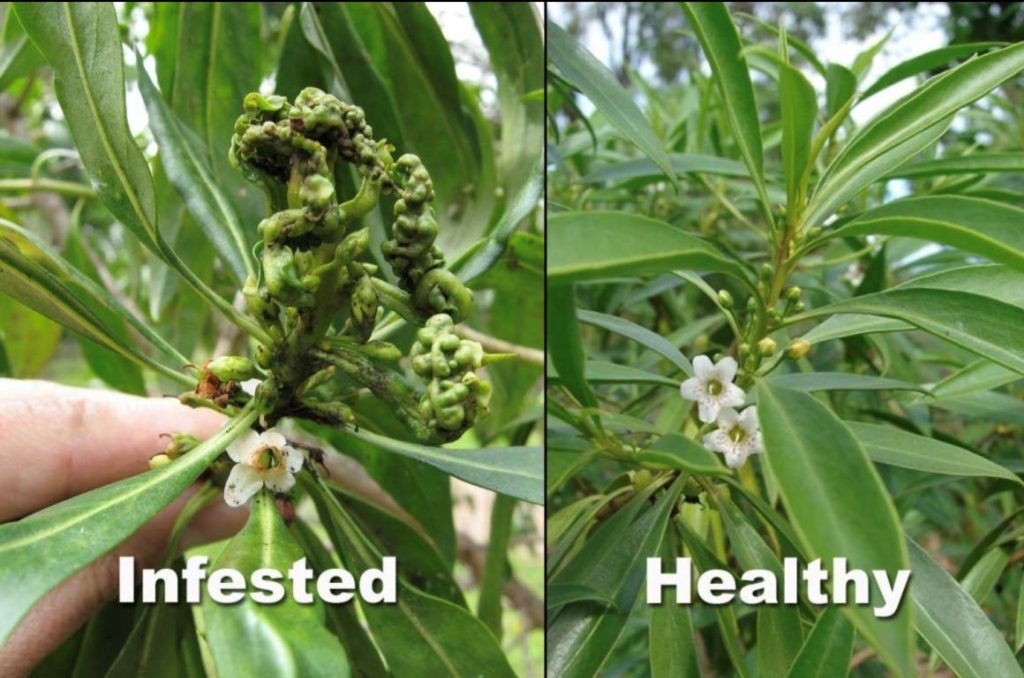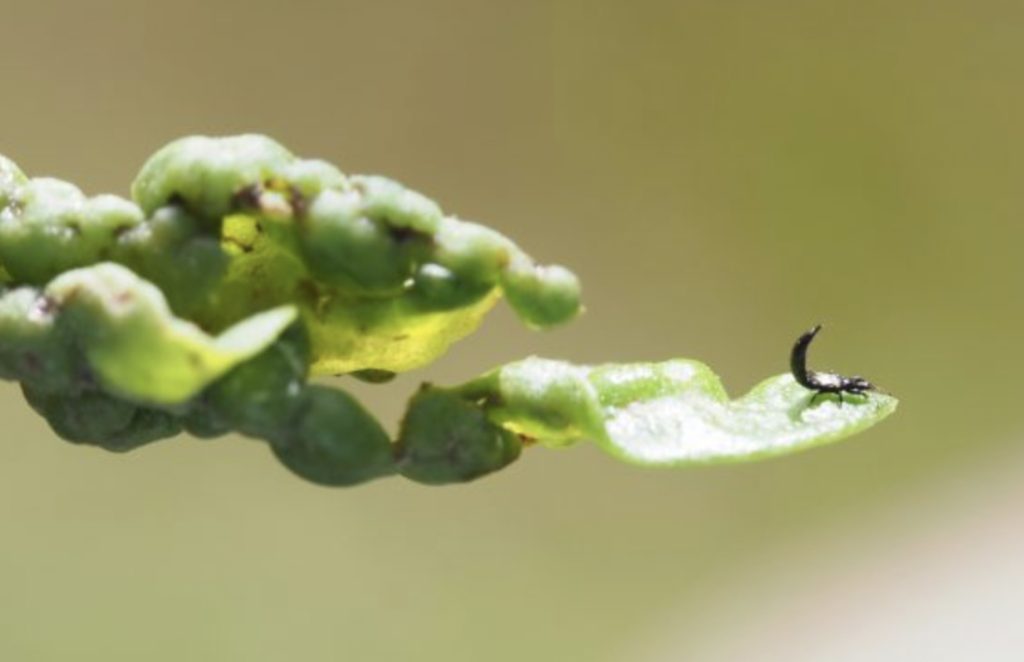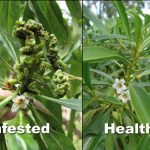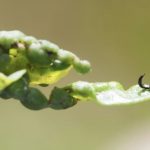Kauaʻi Invasive Species Committee fall 2025 email newsletter: Naio thrip invasion and mongoose captured
Naio thrips better watch their backs because Kauaʻi Invasive Species Committee and its partners have in their sights the invading invasive insects first identified on Kauaʻi only just 2 months ago.
The organizations and agencies are surveying the Garden Island now to find the bad bugs that can be lethal to the native Hawaiian plant and determine their next move to eradicate them.
Meanwhile, the fight the make sure mongoose don’t get a foothold anywhere on the island continues as a hitchhiker — this time a young female — was found and caught early last month at Nāwiliwili Small Boat Harbor.
Kauaʻi Invasive Species Committee provided updates on both fronts in its fall 2025 email newsletter. Keep reading to learn more.
Naio thrip invasion
Myoporum thrips, an invasive sap-sucking insect thought to be native to Australia that attacks indigenous Hawaiian naio plants, also commonly called bastard sandalwood or false sandalwood, were first detected on Kauaʻi in August.
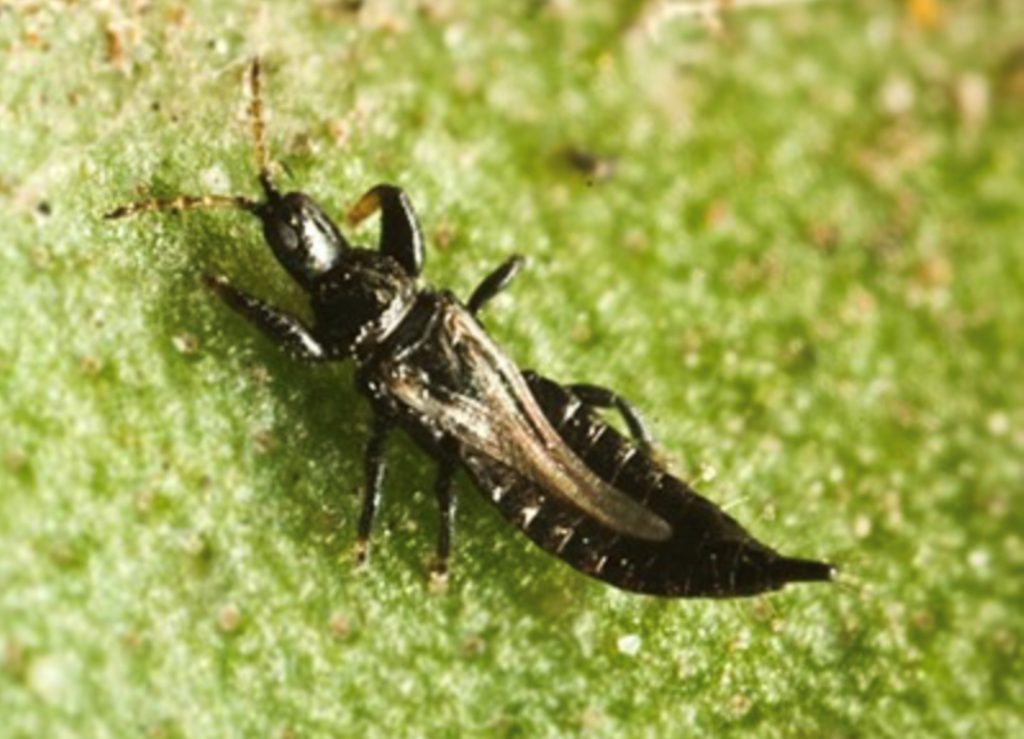
They have since continued to spread, and sightings of this pernicious pest or damaged naio plants should be reported immediately.
The bad bugs cause leaf scarring, curling and potentially lethal damage to the plants.
Kauaʻi Invasive Species Committee, Hawaiʻi Department of Land and Natural Resources Division of Forestry and Wildlife, Hawaiʻi Department of Agriculture and Biosecurity and several partners are conducting surveys islandwide now on cultivated and wild naio plants to determine the extent of the infestation to identify next steps in how to respond.
Fortunately, an early detection and response plan was developed 4 years after the invasive insect was first detected anywhere in the islands.
Division of Forestry and Wildlife Forest Health Coordinator Rob Hauff said having that plan in place helped the agencies respond quickly. It’s hoped the rapid response will lead to successful containment or even islandwide eradication of the invasive insect.
Hauff added that help from Kauaʻi residents will be critical to ensuring the full infestation is discovered and treated.
“Myoporum thrips feed on Myoporum leaf tissue and cause leaf curl, scarring, deformation or abnormal growths that damage the naio and can potentially lead to its death.” said Hauff in the newsletter. “Naio plants with this kind of damage should be checked closely for small black insects. Reports of any such damage or sign of thrips should be made immediately to 643pest.org.”
Naio — which grows as a tree or shrub depending on the climate — is an important component of lowland and coastal dry forest ecosystems. It acts as host to several species of endemic insects and pollinators.
Myoporum thrips were first discovered in the state in 2009 on Hawaiʻi Island, where they are now widespread.
The invasive insect was identified on Oʻahu in 2018 and confirmed on Molokaʻi in 2024.
Adult naio thrips are small, dark brown to black and have feathery wings, while their larvae are yellow to orange.
Pathways to potential introduction for the destructive pest are many and include shipping of plants, equipment, parts of naio and thrips hitching a ride on humans.
Mongoose captured at Nāwiliwili
A live mongoose was captured last month on Kauaʻi. The invasive species is not established on the Garden Island.
Kaua‘i Invasive Species Committee members captured the critter the morning of Sept. 5 at Nāwiliwili Small Boat Harbor in a continued multi-agency effort to prevent mongoose establishment on the island.
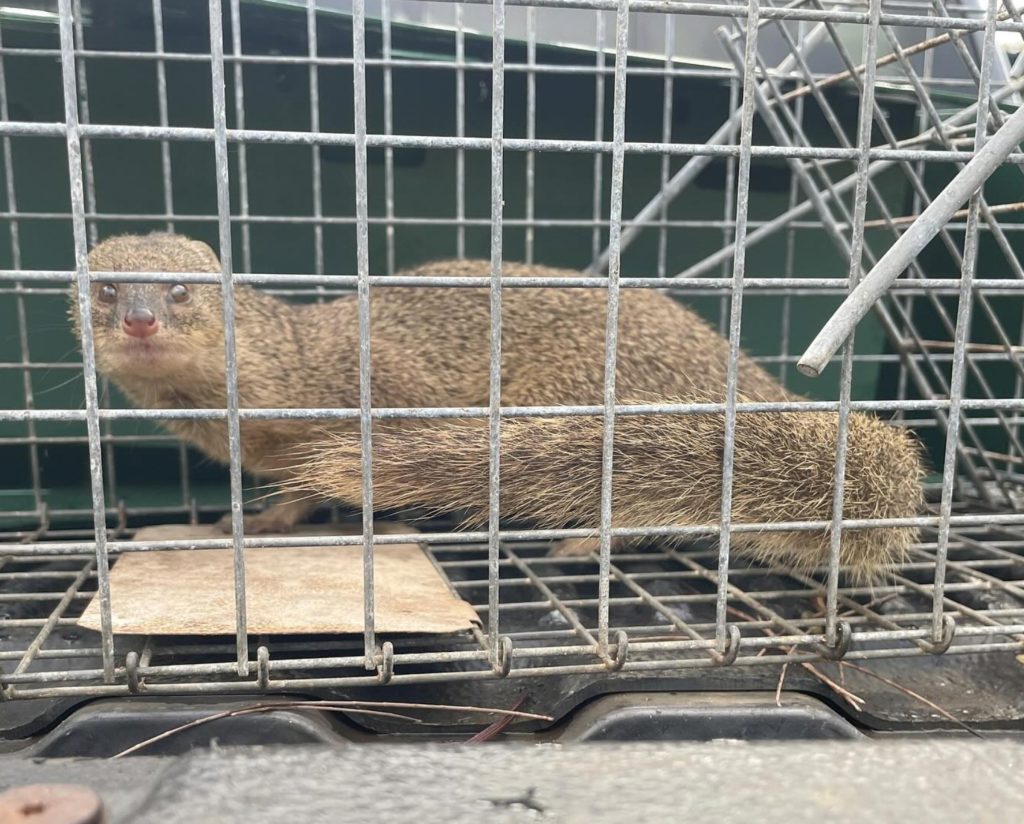
Kaua‘i Invasive Species Committee on Sept. 4 deployed 12 traps baited with fresh coconuts along the harbor’s jetty wall to lure the creature in after receiving reports of a possible mongoose in the area.
A juvenile female was found in one of the traps the next morning.
The animal was handed over to Hawai‘i Department of Agriculture and Biosecurity, which is working with U.S. Department of Agriculture Wildlife Services to complete an analysis.
Mongoose are known to hitchhike to Kaua‘i from other areas where they are established such as O‘ahu, Maui, Moloka‘i and Hawai‘i Island. They are a threat to native ground-nesting birds.
Teams from Kaua‘i Invasive Species Committee, Hawai‘i Department of Agriculture and Biosecurity and additional agencies respond to mongoose sightings at high-risk sites in an effort to protect the island from the devastating impacts of mongoose becoming established here.
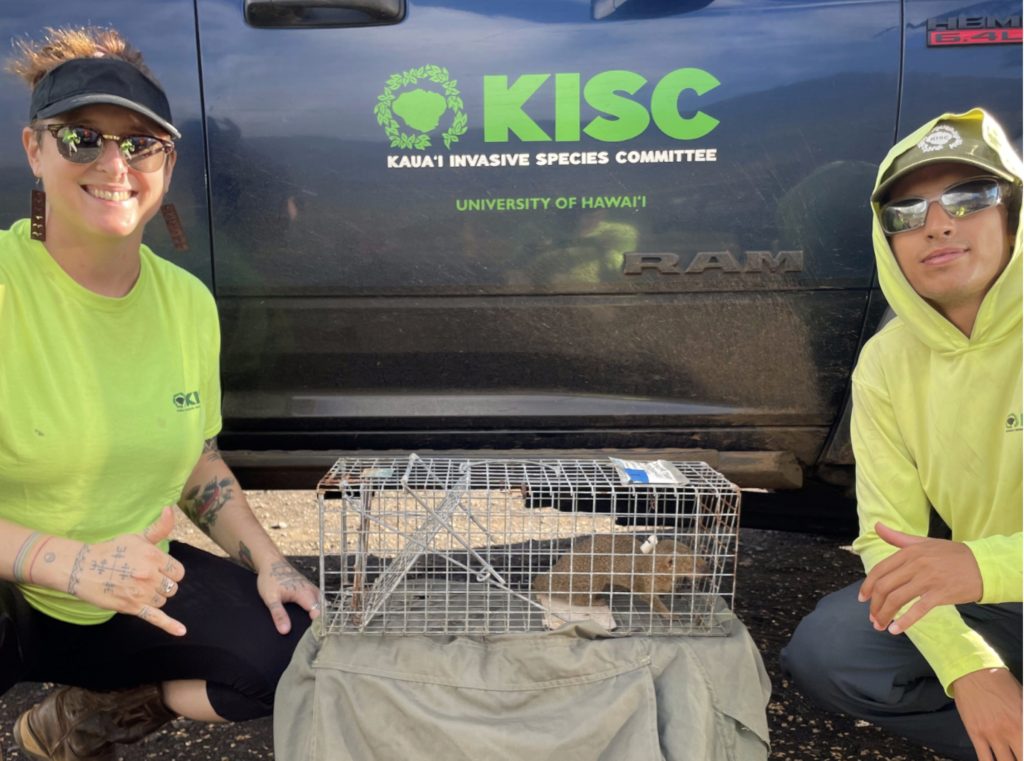
Five live mongoose have been captured since 2012, when response efforts on the island were strengthened. The last mongoose caught on Kaua‘i was a pregnant female captured in 2023, also at Nāwiliwili harbor.
Any suspected mongoose sightings should be reported to Kaua‘i Invasive Species Committee at 808-821-1490, the state toll-free Pest Hotline at 808-643-PEST (7378) or online at 643pest.org.



